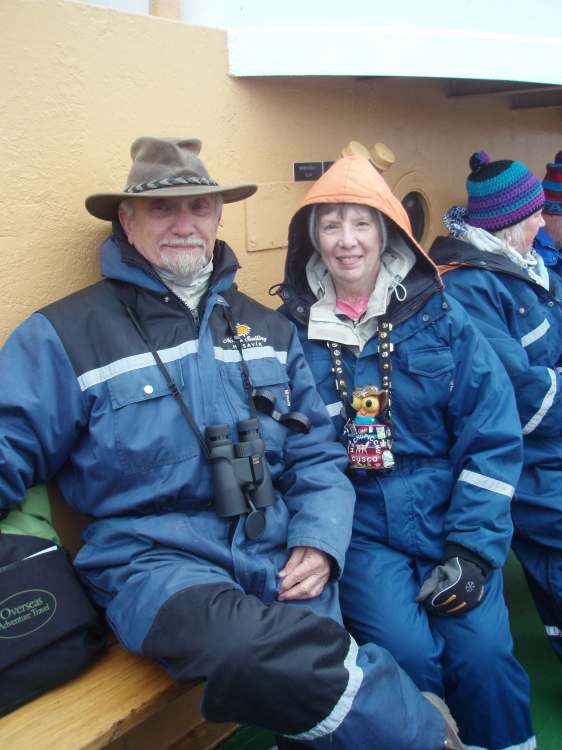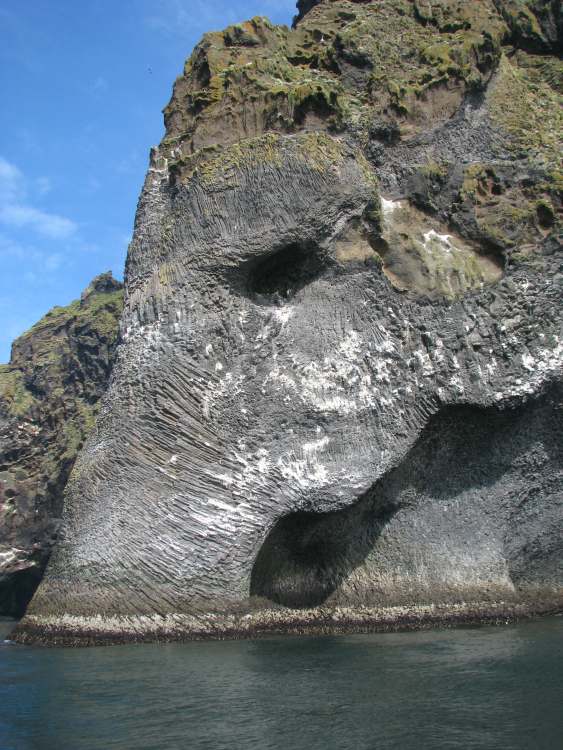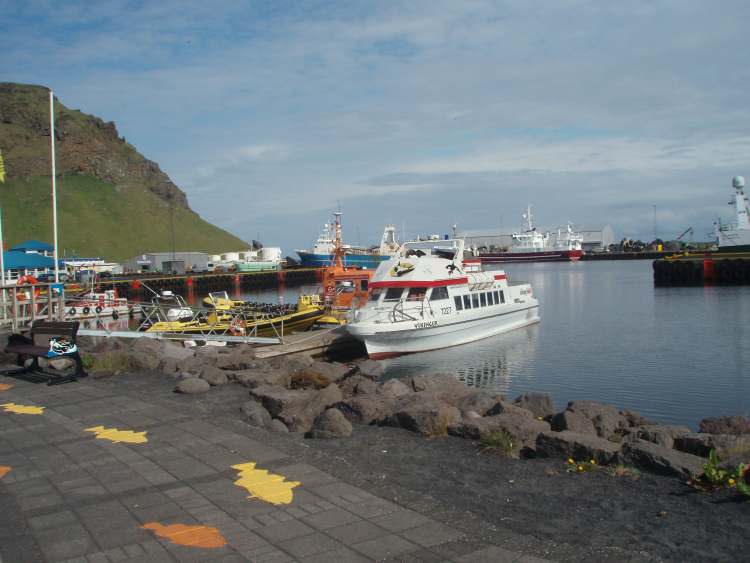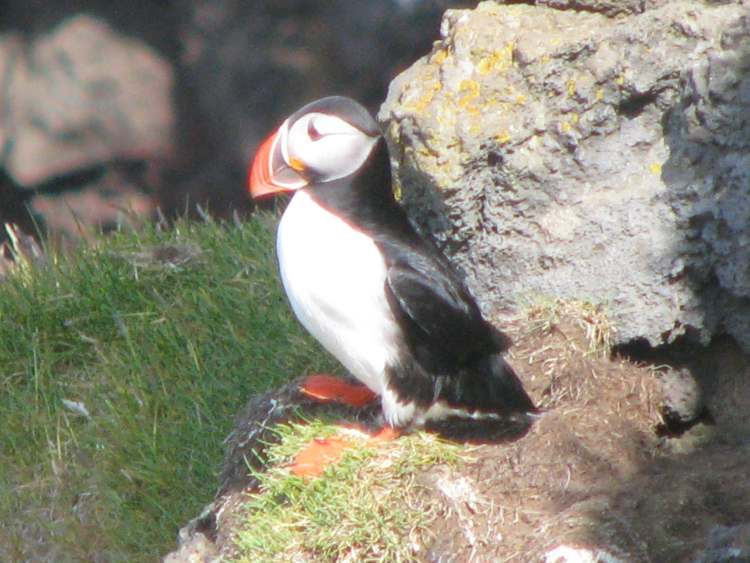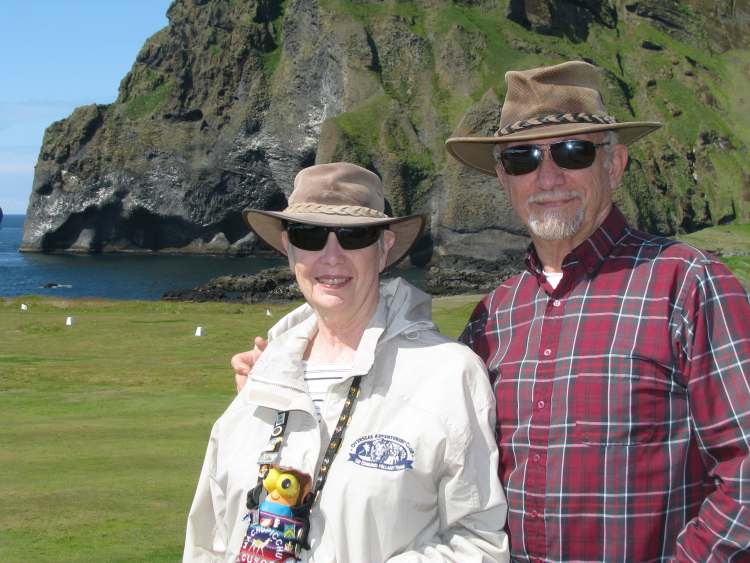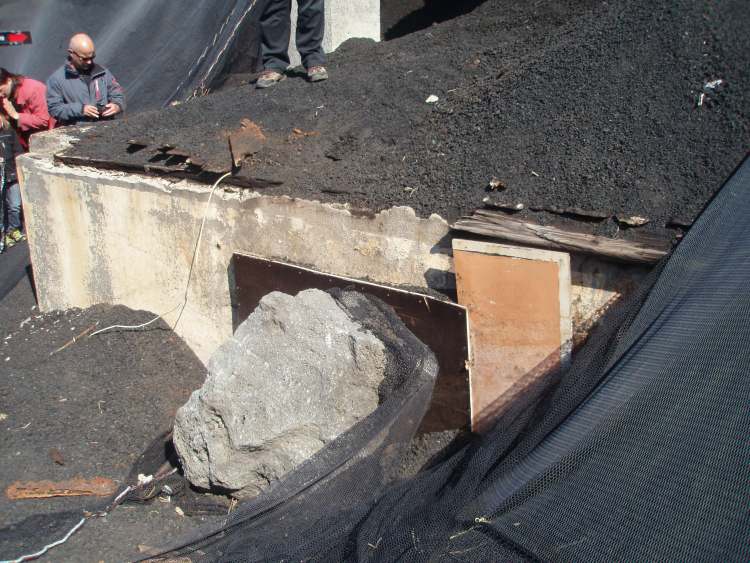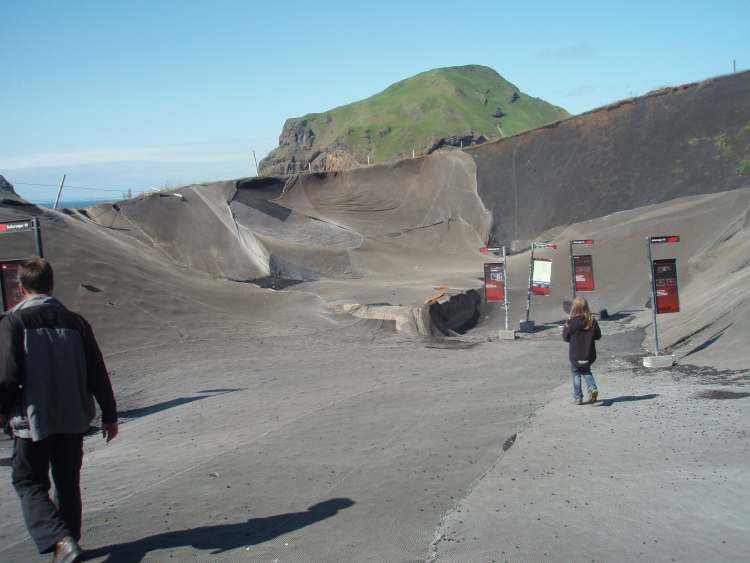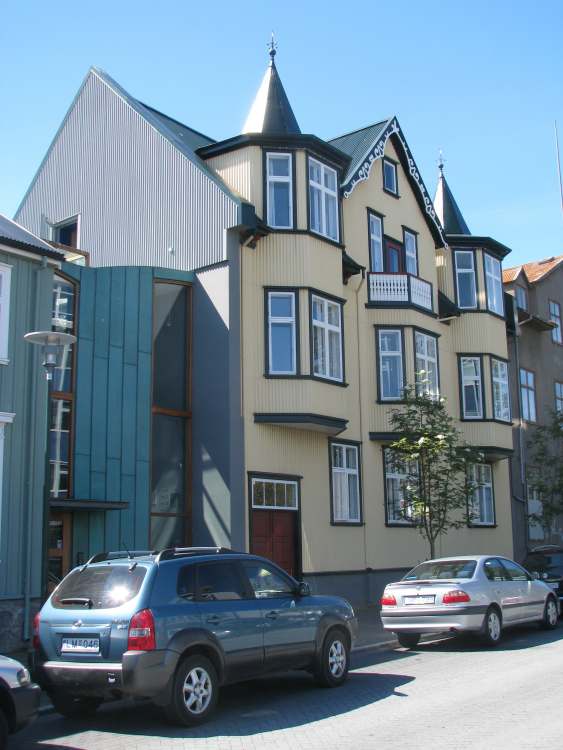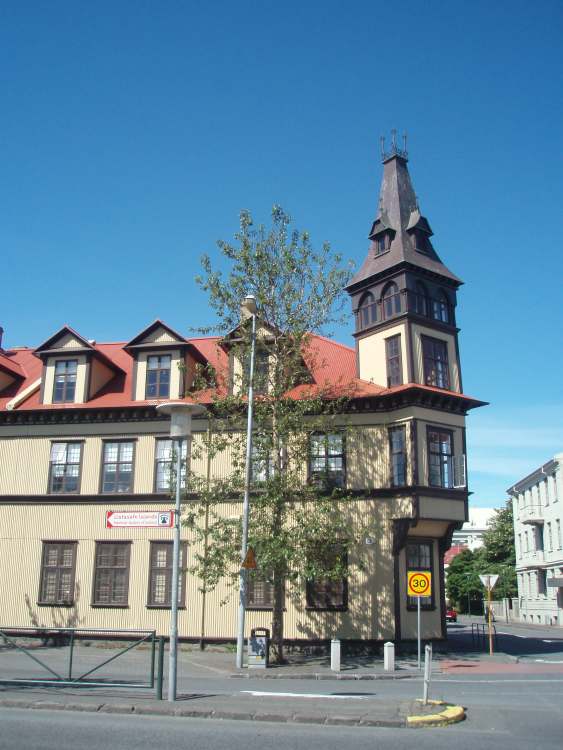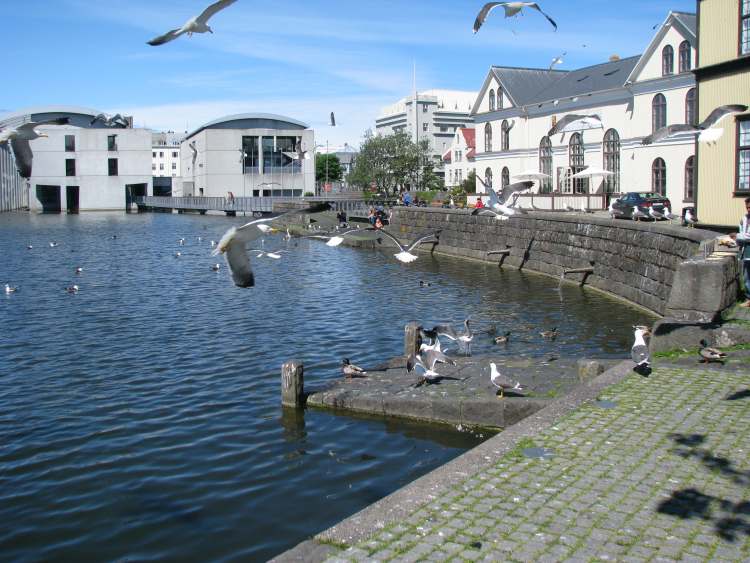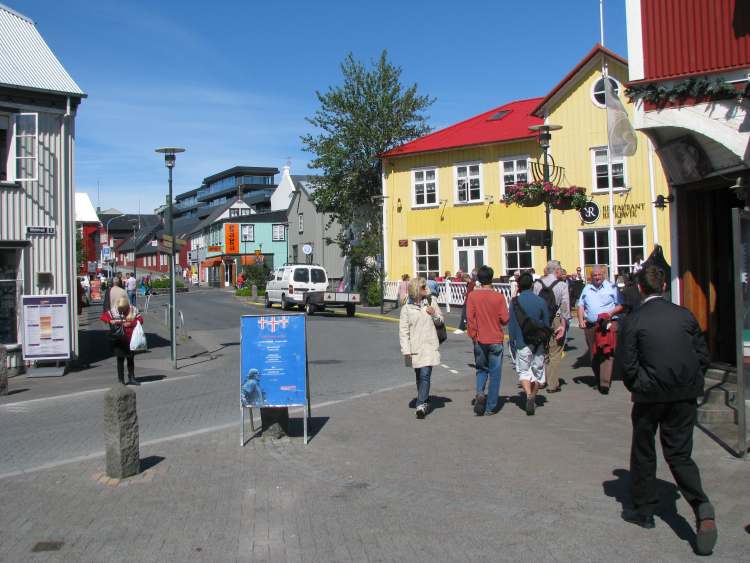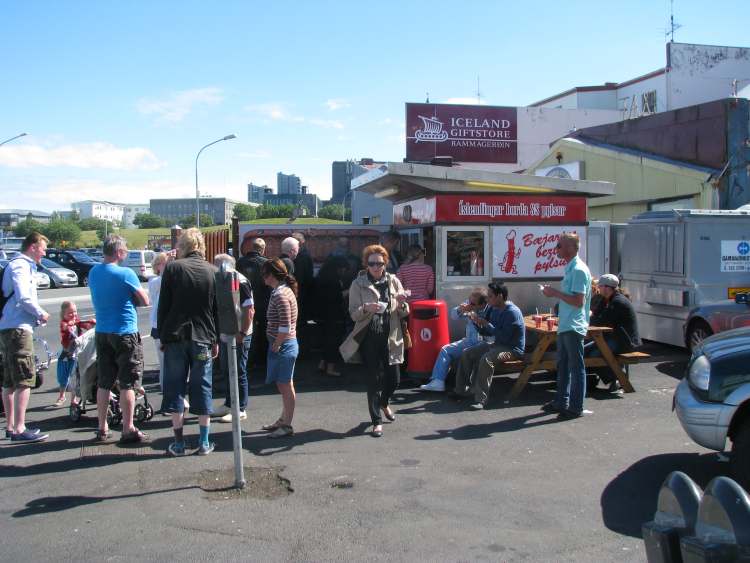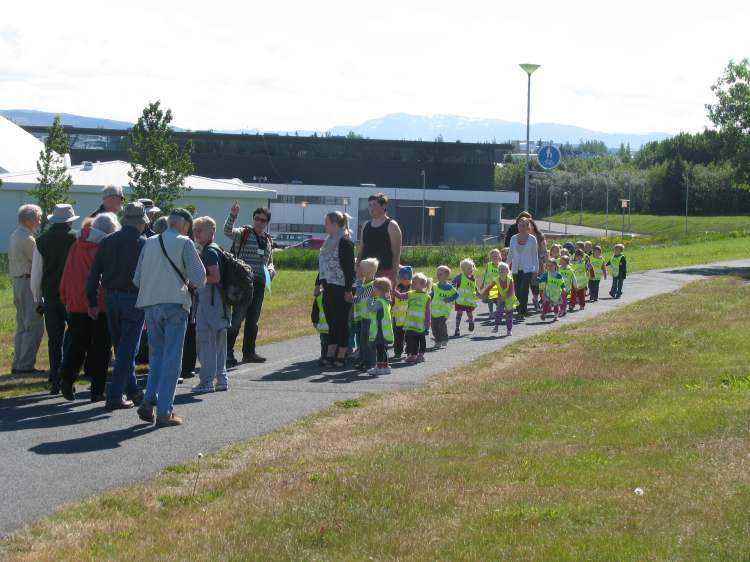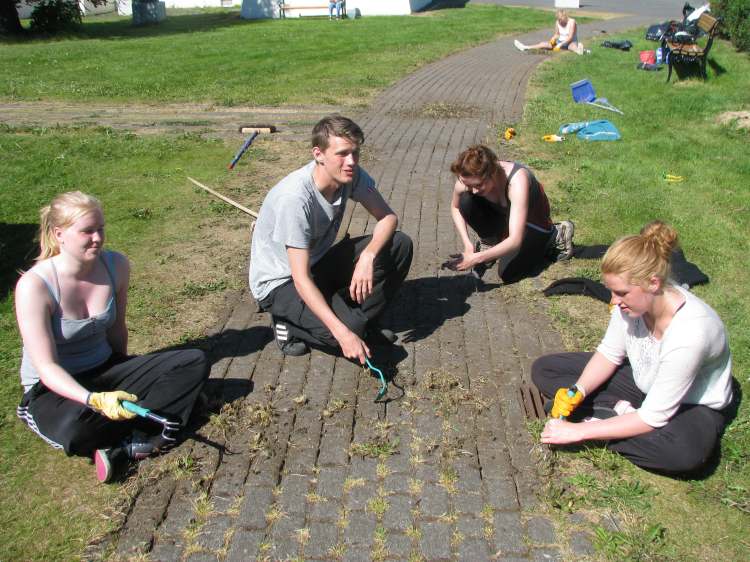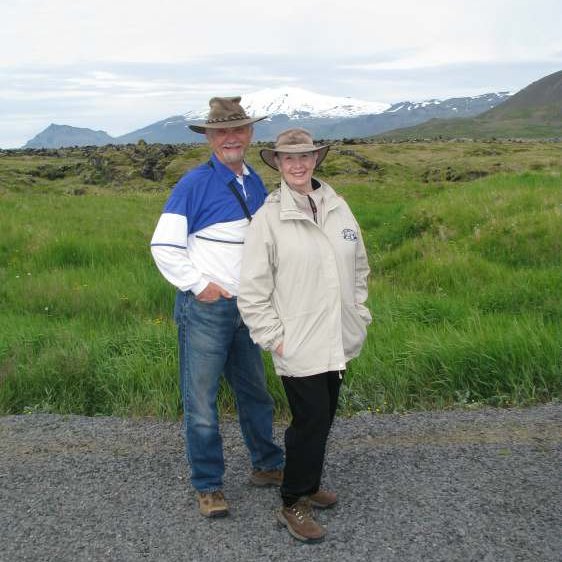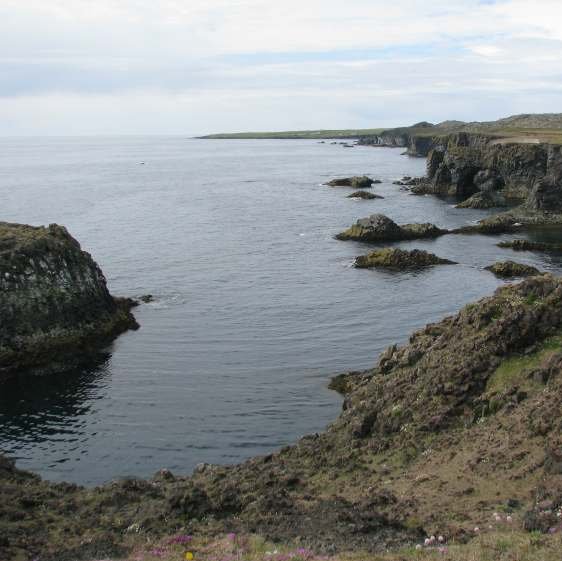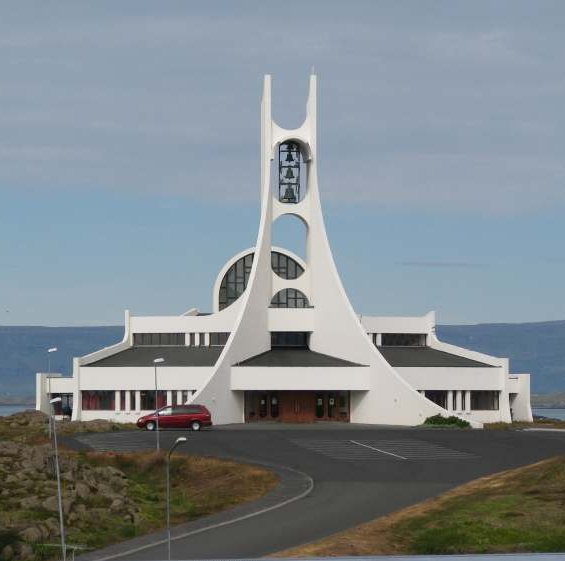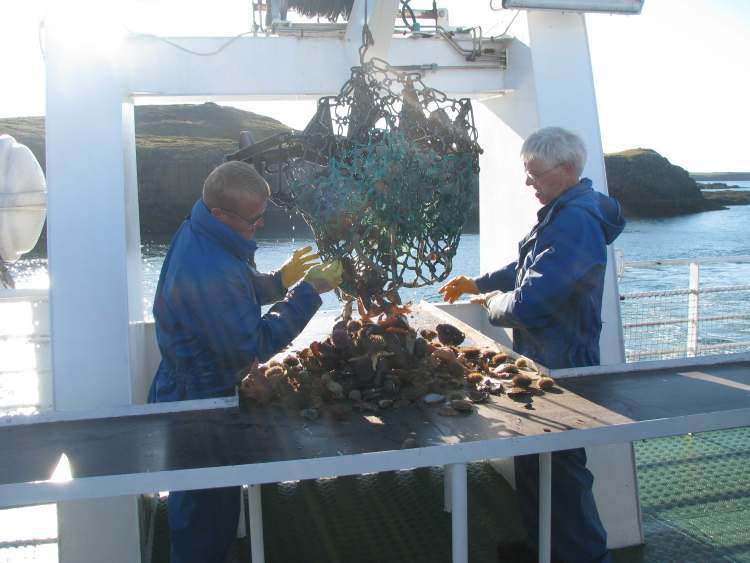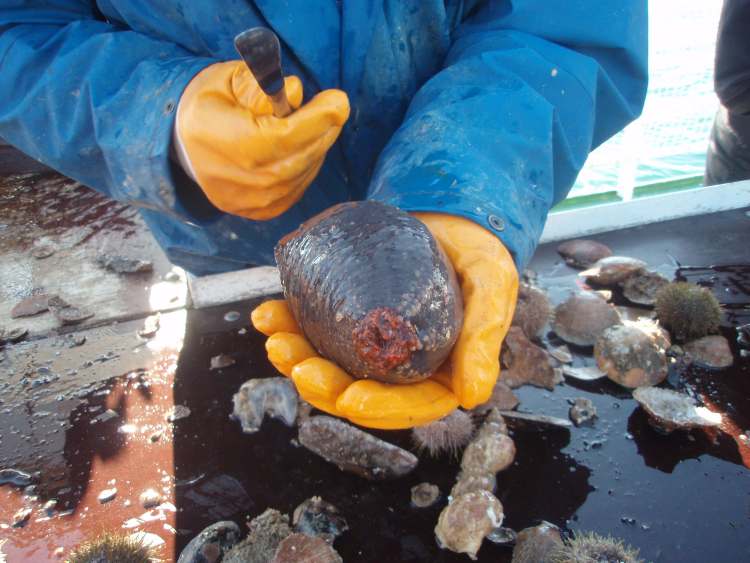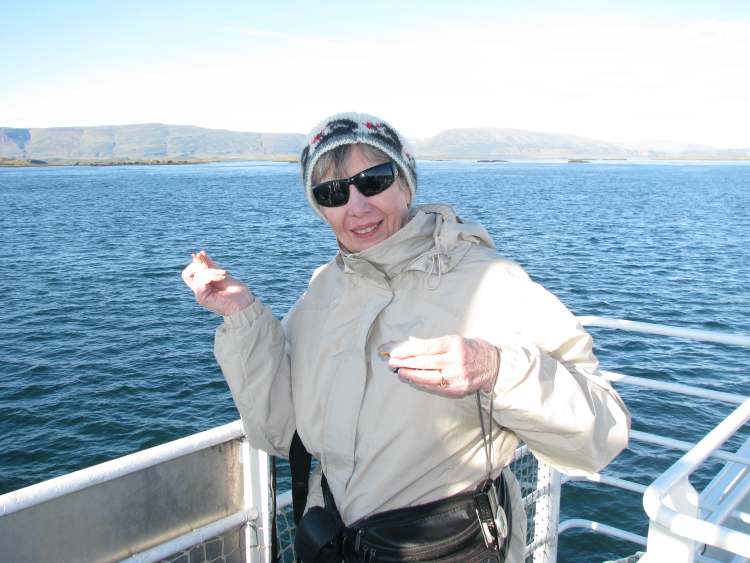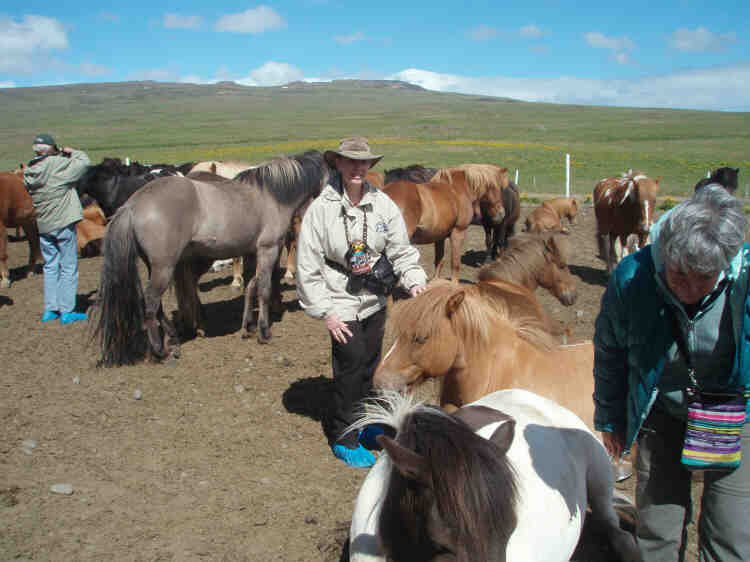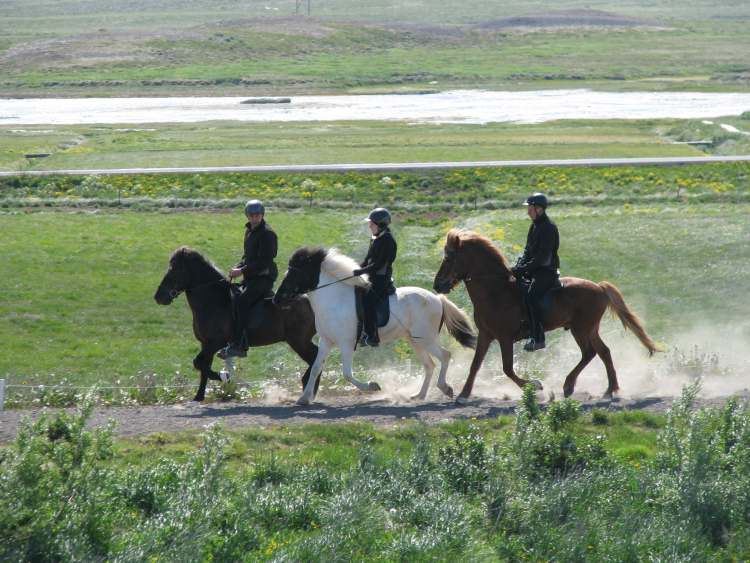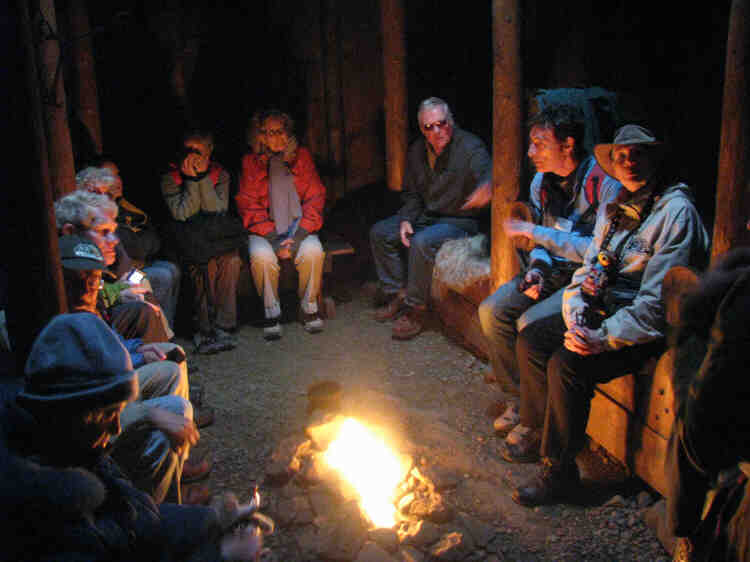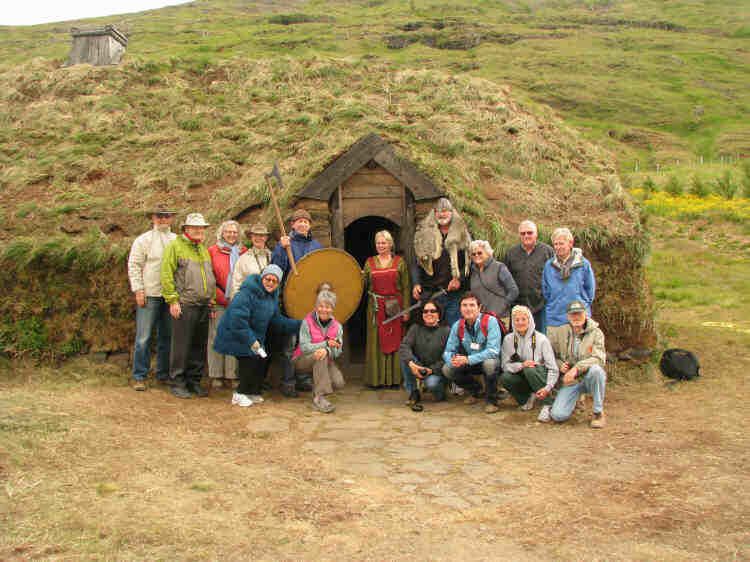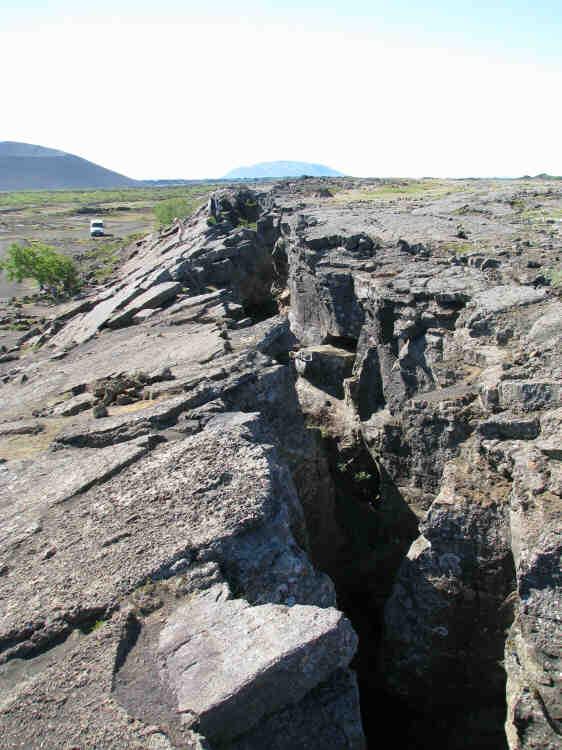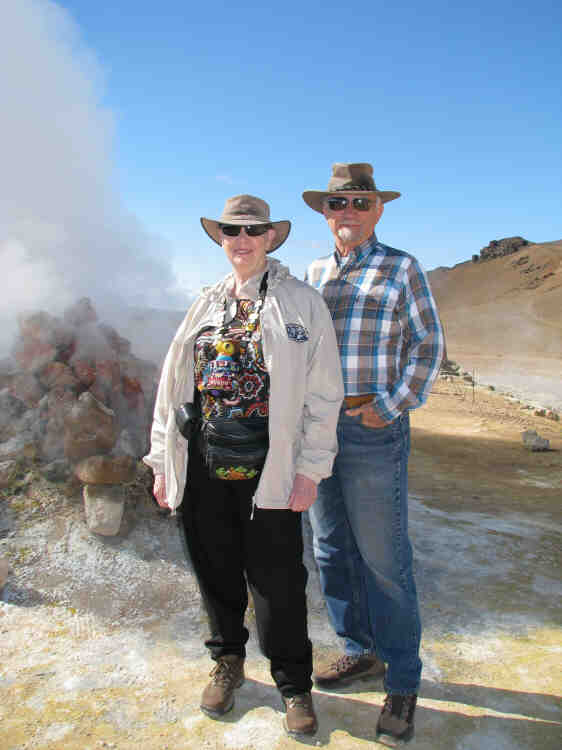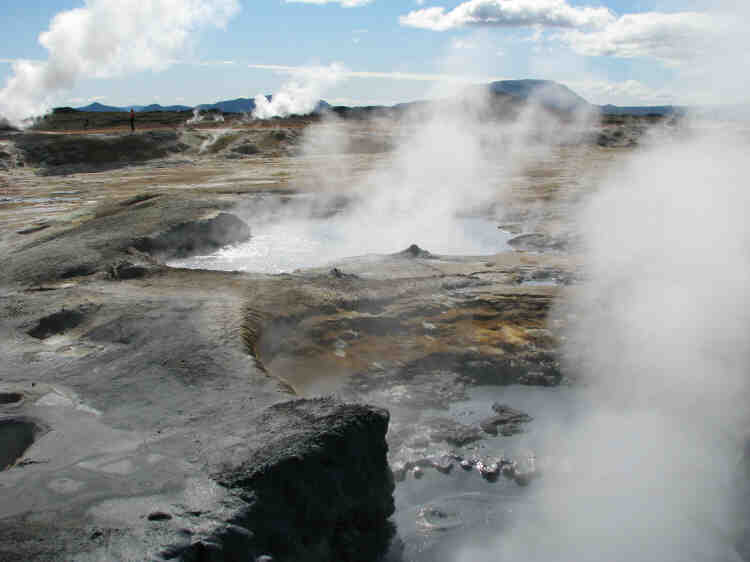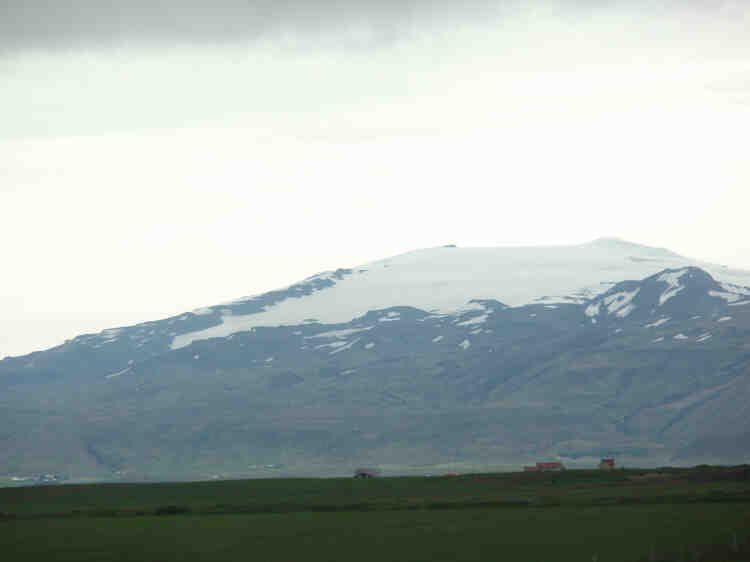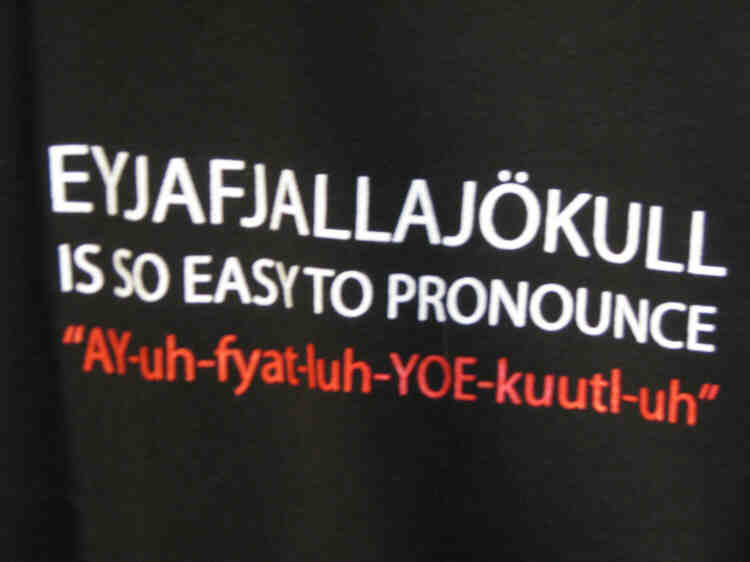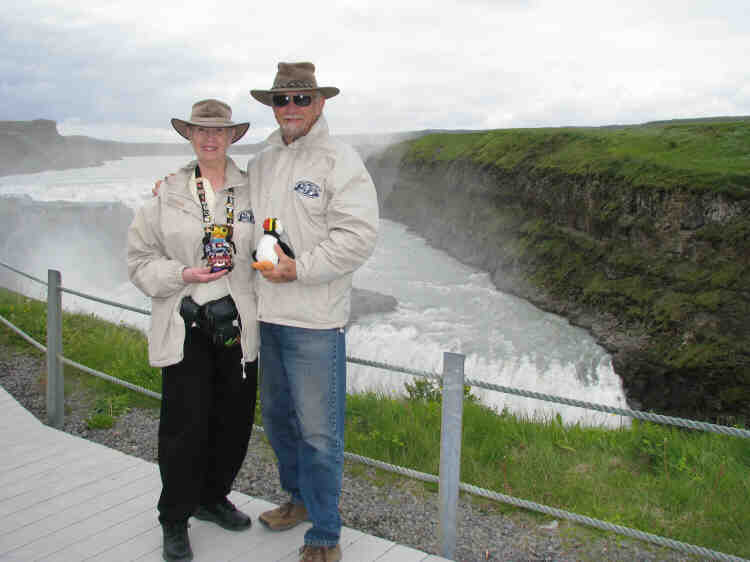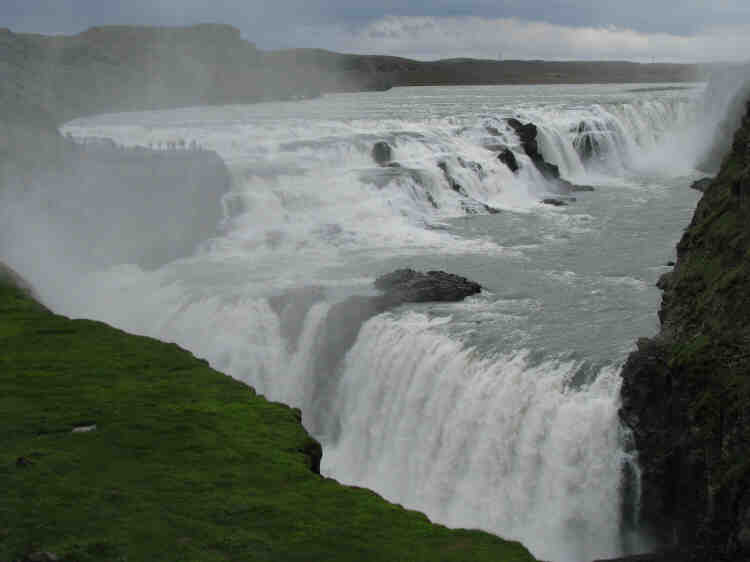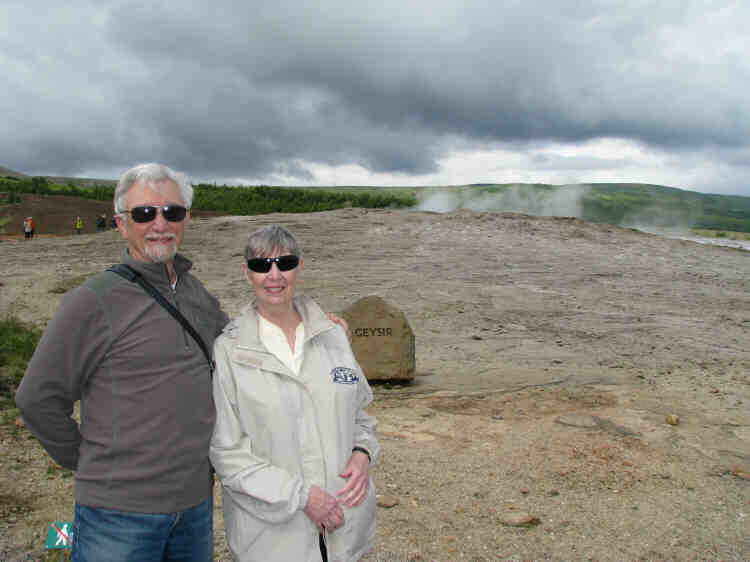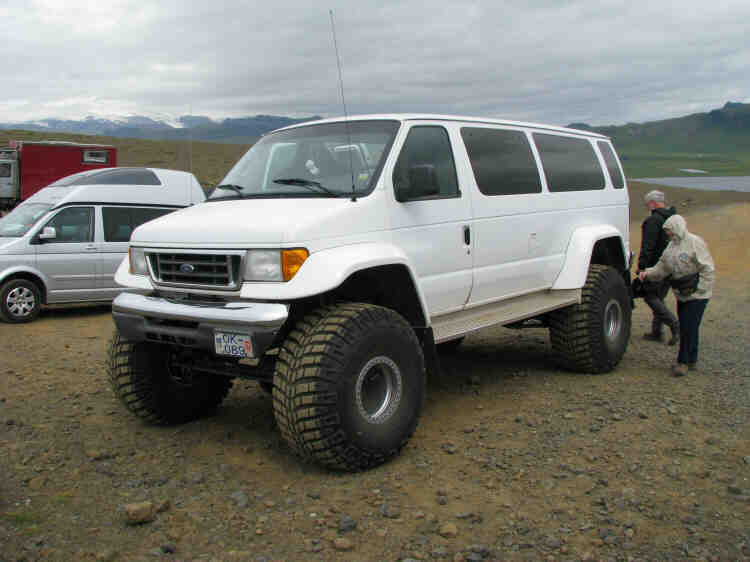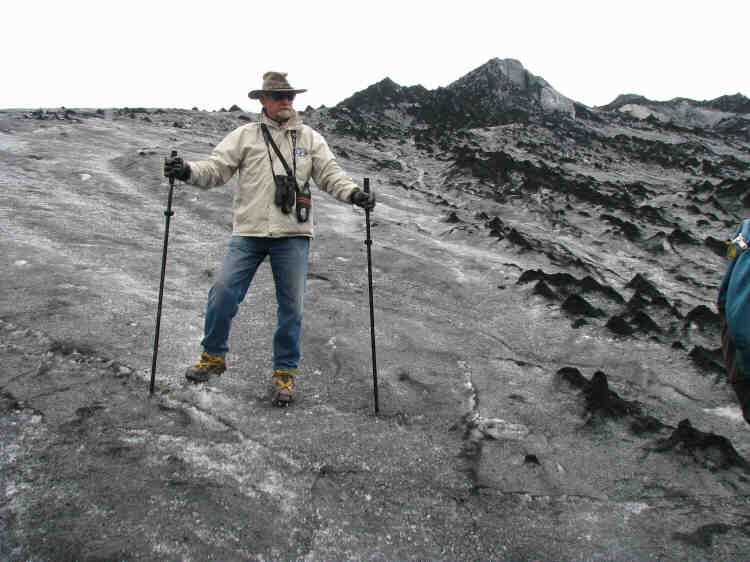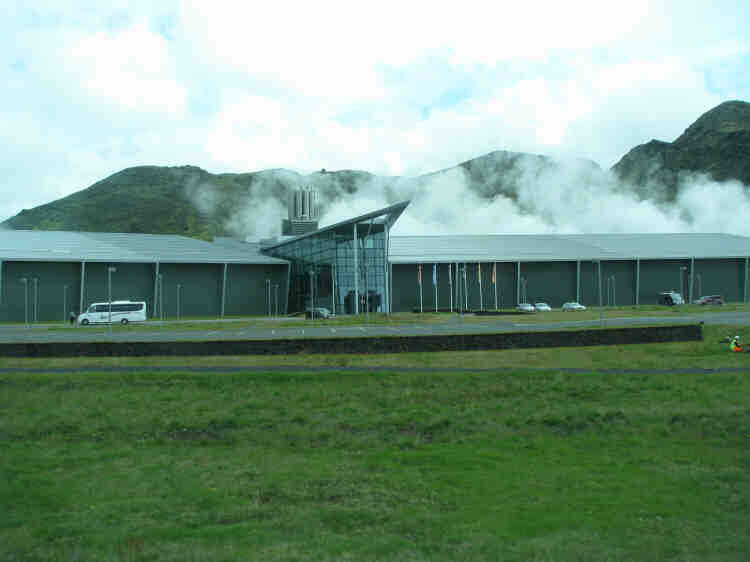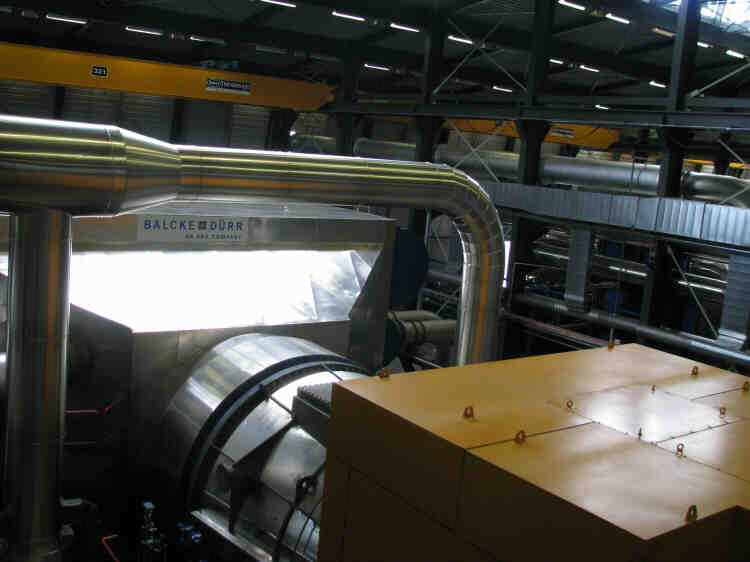Report from Iceland
Diane L. Smith
"22 Jun: Daughter Tracy did a fine job of getting us to the airport at 7:30 a.m., but after leaving Nashville things didn't go so well. When we arrived in Charlotte for a plane change, we found that the weather at JFK was really bad. About eight hours later we finally got on the plane for New York. Many flights were cancelled, ours just very late. We landed at JFK about 11:30 p.m. Unfortunately, our plane to Iceland left at 8:40. There were no hotel rooms anywhere to be found; so, we spent the night in the airport. I got about 45 minutes of dozing on a concrete bench about four ft long. J.T., perhaps due to his Air Commando training, did a bit better on the adjoining accommodation.
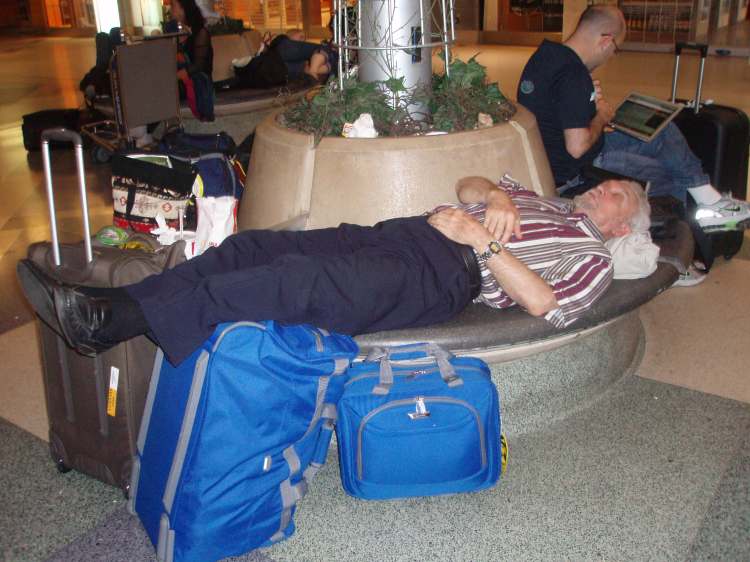
"23 Jun: Today we were on stand-by for one of the two flights to Iceland, but didn't know until the last minute whether we would get on the fully booked 2:05 p.m. flight. While we were awaiting our fate, there was a security alert caused by a TSA screw-up that required everyone to leave the terminal. After a significant wait outside (towing all our luggage with us every step) we were allowed back in the building, but still couldn't start the check-in process for about another hour. The lobby was packed with people waiting to go through security again. Tempers were short, all flights delayed. And we still didn't know whether we were getting on a plane at all. With 45 minutes sleep, all this was very hard on my good nature.
"We finally did get on the plane, but didn't get to Iceland until nearly midnight. We are in a hotel tonight, and in the morning we're supposed to catch a plane to take us to the Westman Islands to catch up with our tour, a day behind everyone else. Oh well. Hopefully, things will improve from here. I'll let you know.
"24 Jun: Here at last on the Westmen Islands. This is a lovely place. We took a boat ride around Heimaey Island, the largest of 15 and the only one inhabited. Saw lots of birds, to include puffins, my favorite. They fly better than I realized.
"In case you care, the name of the islands came about in 874 when a small group of Irish slaves rebelled, killed their owner, and escaped to the islands. In those days, the Vikings/Norwegians called the Irish Westmen. The owner's brother came after them to avenge his brother's death. He killed all of the Westmen, and from that time forward the islands became known as the Westmen Islands.
"Also saw a movie about the eruption in 1973 that buried 1/3 of the homes, piled ash around 1/3 more, and expanded the size of the island 15%. It started with a fissure over one mile long spewing out lava and gas. It finally closed and developed a cone in one spot. The whole thing lasted six months. The island was evacuated with no loss of life. Rescue folks returned and using high pressure water pumps from the US base on the mainland, stopped the lava from closing the harbor, but they couldn't save the town too.
"Excavation of some of the buried homes has started with an eye toward setting up an info center, etc. The remnants are under the ash, 10-30 ft down. New homes have already been built over some of the destroyed homes. Most of the people returned after things settled down. About 4000 live there now. Lovely place. And the food has been great.
"25 Jun: We are now on the mainland of Iceland. We spent a couple of days in Reykjavik (which means 'Smoky Bay'--the original explorers mistook the many geothermal steam vents for smoke columns) visiting historic sights and eating some great food. We saw the hotdog stand made famous by Bill Clinton and other visiting celebrities, but we opted for other venues at meal times. We did a bit of shopping downtown. Things are expensive here; so, don't plan to buy much.
"There is essentially no unemployment in Iceland. Everyone who wants a job has at least one; many work two jobs. When school ends for the summer, the local government puts the teenagers to work clearing rubbish, cleaning fish tanks, cutting grass, weeding, etc. They are paid for their work and don't have much time or energy left to get into trouble. It also helps them learn they are responsible for where they live. Nice system.
"27 Jun: Today we headed west seeing waterfalls, more historic sites and an amazing thermal area. Boiling water sprays out of the ground many places in one valley. The hot water provides heat and hot water to all the homes in the local villages. We drove around the Snaefellsnes peninsula, with a large volcano and glacier in the middle, just beautiful. JT and the others took a 1-1/2 hour walk along the coast, but I passed; went to a museum instead. I just can't walk that far right now. We stayed overnight in Stykkisholmur (The first part is pronounced 'Sticky'). One of the few Catholic churches in Iceland is there, and it has a unique and pleasing design.
"28 Jun: A shark farm? Yes; we went to a shark farm to have a taste of hakarl, a national delicacy of sorts. Basically, it's aged shark meat. I guess it's the sort of thing for which you have to 'develop a taste.' This evening we had a boat ride around the Breidarfjordur Bay, seeing many birds, eating really fresh-catch scallops, and other tasty things right out of the sea.
"29 Jun: On our way to Akureyri, we stopped at a horse farm for lunch and to see the horses go through their paces. These horses were brought to Iceland in the 900s by the Vikings. They are the purest breed on the planet. Other horses are not allowed to enter Iceland. In fact, if an Icelandic horse leaves the country, say to participate in some competition, it is not allowed to return home. They are smaller and sturdier than horses seen elsewhere. They have a special and unique fifth gait, called tölt, that is beautiful, smooth, and quick. They come in many colors, from white to black, with manes often a different color than the body. THEY ARE NOT PONIES! They are bigger and stronger than ponies. Icelanders get hostile if someone mentions ponies.
"We also saw Eric the Red's farm (including a reproduction of his sod house) and learned how he ended up here (he killed someone.) He was quite a big man on the island. He eventually left here and went to Greenland (again, he killed someone.) As you can tell, he wasn't an easy-going fellow. Eric's son, Leif the Lucky, left here and sailed down the coast of North America, stopping in Long Island. Columbus gets all the credit, but Leif was the first European in the "New World." Unfortunately, he gave the natives some Skyr which made them ill. They believed he had tried to poison them, so he had to get out of town in the hurry. (Skyr is a dairy product similar to yogurt. If you put a graham cracker crust under it and a fruit topping over it, it's a pretty good dessert (kind of like cheesecake.)
"30 Jun: We went whale watching. Saw several, of three different kinds, and lots of birds of various kinds. That might have been more exciting if we had not seen whales in Antarctica. The whale museum was interesting. The change in water temperature due to global warming has resulted in many changes. More mackerel are entering Icelandic waters causing food sources for puffins and other critters to deplete. Catching too many mackerel has caused many complaints from the other fishing nations in the area about fishing rights and quotas.
"In the evening we went to a local home for dinner. Our hosts, a family of four with three present, were very gracious and provided a wonderful meal featuring a traditional Icelandic lamb stew; simply delicious.
" 1 Jul: Lake Myvatn is located in a geothermally active area. Everywhere we see lava flows, fissure eruptions, false craters (where water hitting lava caused explosions), steam vents, and other indications that this is a very 'active' country. The separation of tectonic plates is causing the island to grow wider by two centimeters per year. The 'locals' don't seem too worry about it. It is very beautiful.
"There are not many trees. Almost all the trees have been planted in the last few years. There are some indications that the Vikings found trees, but cut them all down for firewood and building materials. Someone brought in Alaskan lupine to help stabilize the soil, but later found it spread too much and smothered out native growth, kind of like kudzu. At least it's pretty.
"2 Jul: After a short flight from Akureyri to Reykjavik, we wandered around the southern end of the island known as the Golden Circle. It's mostly glaciers and volcanoes, sometimes in the same place. Eruption of a glacier-capped volcano melts the underside of the glacier, resulting in a sudden major flood of water pouring down the river beds and over the valleys. One of the more dangerous volcanoes is Katla, with the top covered by a glacier. It erupts about every 10 years. It last erupted in 2000 . . . . We saw the volcano that erupted in 2010, closing the airports in Europe and almost spoiling our Ireland trip. Its name, Eyjafjallajökull, confounded news readers all over the planet. Big sucker!
"We saw two large waterfalls and visited Stori Geysir, the now-dormant geothermal water/steam spout. Its name has evolved into the English term geyser by which all other such vents are known. Our little traveling buddy, Wendell, has acquired a new friend of his own, "Lenny" the Linde (the Icelandic word for Puffin). Our stop for this night and the next was in Selfoss.
"3 Jul: We took a fun ride around the black-sand beach and scaled the headlands in a couple of souped-up, all-wheel-drive, go-anywhere machines that the locals call 'superjeeps.' Got up close with puffins and great scenery. We also visited one of the glaciers. This one was more black than white on the surface due to ash from volcanic activity, very different from the bluish-white glaciers we saw in Alaska and Antarctica.
"4 Jul: We went white-water rafting in a glacial river; well . . . , it was more light-green-water rafting. The water was cold, but we were outfitted with full wetsuits that kept us adequately warm. Once back in the building and out of the wet gear, free coffee, tea and hot cocoa were waiting and really hit the spot.
"On the way back to Reykjavik, we made two stops: the first was at a flower farm where they grow the year round thanks to geothermal heating and cheap electricity for UV lighting; the second was a visit to one of their ultramodern geothermal power plants. Given the amount of energy that is flowing through the place, it is virtually silent and kind of eerie. In recent times, there have been a lot of Chinese engineers visiting these plants to gather information on the technology. China has some significant geothermal areas, and they want to develop them quickly.
"5 Jul: We went to the Blue Lagoon--a large, milky-blue, warm/hot water basin about five feet deep. It is a wonderful spa that is alleged to have amazing healing, soothing powers. In several places there are tubs of silicate 'mud' that you rub over your face and body. It immediately makes you so young and beautiful that no one even recognizes you--yeah right! Actually, it does remove the dead skin and leaves you feeling smooth and silky. And the warm water relaxes every muscle. I loved it.
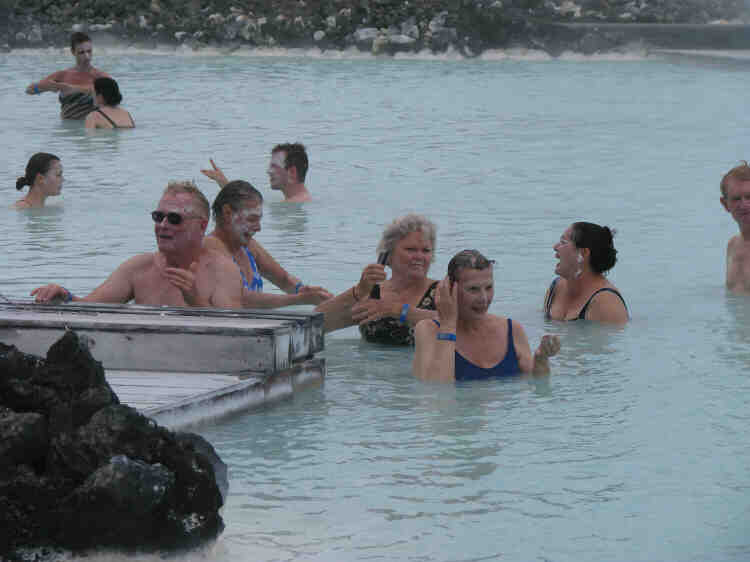
"6 Jul: We spent our final morning before heading to the airport in Keflavik visiting the National Museum that chronicles Iceland's history from its Viking beginnings through to modern times. It is a very interesting place that is valued most highly by the Icelanders. During the recent economic difficulties, there was a suggestion by European consultants that the museum be closed, but the Icelanders adamantly refused and made deep cuts in other programs instead.
"Iceland is a 'new' country. Its history goes back to the 800s, but it only became an independent country in 1944. With help from the US and other WW2 allies, the economy took off with fishing and cheap power their primary products. Bauxite ore is shipped in from Australia, processed into aluminum at smelting plants in Iceland using that cheap power; then, it is sent to Norway for worldwide distribution. They have several smelting plants, but some want to build more. Environmentalists are objecting because of the pollution caused and the visual spoiling of the landscape. They are also in contention with England, Denmark, etc., about fishing rights and quotas.
"The Icelanders are a hard working people, frequently working two or three jobs to maintain the life style. Education and medical care is paid for. They can retire at 67 with a pension they pay into during their working years. Men and women often live together without marriage, having children is not a reason to marry; however, they sometimes marry after living together for many years. The women do not change their last names when they marry. People are listed in the phone books by first names, not last.
"Iceland is about the size of Kentucky with a country-wide population less than Nashville's. Most live in or around Reykjavik. Most people are working too hard to worry much about politics. The economy was doing very well until three years ago when the banks started failing and the Krona plunged in value. Many people had home loans in foreign currency; so, they were at a serious disadvantage and often couldn't afford the payments. The leadership is considering joining the European Union, but no decision has been made on either side.
"Final impressions: When I think of Iceland I immediately think of puffins and lava. The puffins are all around the coast and on most of the islands. The lava is everywhere. One forth of this country is volcanically active. Most are fissure eruptions, but several very large cones mark the skyline. Hot water and steam are always bubbling out of the ground, but are often put to good use. The people just live with and get on with their lives. Not many years pass without lava oozing up somewhere. When it stops, the people just clean up, repair, or rebuild their home and farms. And when it happens again, they just do it again. That's how they are."
